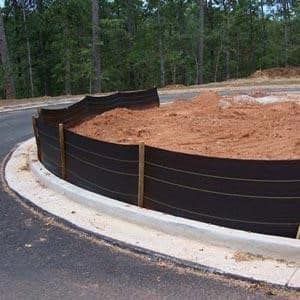 Contributed by Jared S. Saterfiel, District Manager, PPM Consultants
Contributed by Jared S. Saterfiel, District Manager, PPM Consultants
America’s infrastructure is always under construction and construction creates serious stormwater runoff pollution if not carefully managed. This is why the Environmental Protection Agency (EPA) requires construction site operators to develop a Construction SWPPP to minimize the amount of pollutants that run off into nearby bodies of water during rainfall or snowmelt events. These requirements are generally promulgated at the state and local level to meet these federal guidelines; however some states defer to the federal rule.

A Construction SWPPP is a comprehensive plan that outlines the measures construction site operators must take to minimize pollutants (predominately sediments) from running off into nearby bodies of water during rainfall or snowmelt events. As an environmental consultant, PPM Consultants, Inc. (PPM) works with construction site operators to develop an erosion and sediment control plan that includes the types of erosion and sediment control measures that will be used such as silt fences, sediment basins, and vegetative stabilization. The consultant also ensures that the plan includes regular inspections and maintenance of these measures to ensure they are functioning properly.
Another component of the SWPPP is a spill prevention and response plan. The consultant works with construction site operators to develop a plan that outlines the steps to be taken in the event of a spill. This includes containing and cleaning up the spill, notifying appropriate personnel, and documenting the incident. In addition, the consultant will also work with construction site operators to ensure that all employees are trained in spill prevention and response procedures to minimize the risk of spills and protect water quality.
The SWPPP also includes a description of best management practices (BMPs) used to control stormwater runoff. BMPs are techniques or measures that prevent or reduce pollution from reaching nearby bodies of water. Examples of BMPs include minimizing soil disturbance, using temporary or permanent sediment controls, and properly storing and disposing of waste materials.
Regular inspections and monitoring of the construction site are crucial to ensure that erosion and sediment control measures and BMPs are functioning properly. The SWPPP should include a schedule for these inspections and outline the steps to be taken if any deficiencies are found, such as repairing or replacing erosion and sediment control measures, or implementing additional BMPs to address water quality concerns.
In summary, the SWPPP is an essential tool for ensuring that construction sites are managed in an environmentally responsible way. By implementing erosion and sediment control measures, spill prevention and response plans, BMPs, and regular inspections, construction site operators can help protect nearby bodies of water and preserve the quality of our natural resources. If you have any questions or need help with upcoming Construction SWPPPs, please feel free to contact me at jared.saterfiel@ppmco.com.

